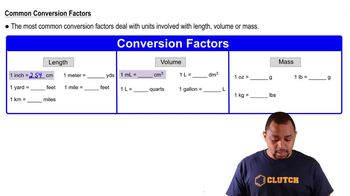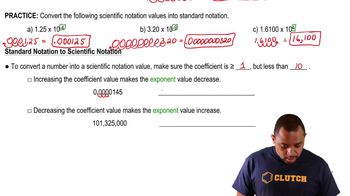Here are the essential concepts you must grasp in order to answer the question correctly.
Metric System and Units of Measurement
The metric system is a decimal-based system of measurement used globally, where units are based on powers of ten. Understanding the relationships between different metric units, such as liters (L), milliliters (mL), and microliters (µL), is essential for converting between them. For instance, 1 L equals 1,000 mL, and 1 mL equals 1,000 µL.
Recommended video:
Units of Radiation Measurement
Volume Conversion
Volume conversion involves changing a measurement from one unit to another while maintaining the same quantity. To convert liters to microliters, one must multiply by the appropriate conversion factor. For example, since 1 L equals 1,000,000 µL, converting 20 mL to microliters requires multiplying 20 by 1,000, resulting in 20,000 µL.
Recommended video:
Common Conversion Factors
Scientific Notation
Scientific notation is a method of expressing very large or very small numbers in a compact form, using powers of ten. This notation is particularly useful in chemistry for dealing with measurements that span several orders of magnitude. For example, 1,000,000 can be expressed as 1 x 10^6, which simplifies calculations and comparisons in volume conversions.
Recommended video:
Standard Notation to Scientific Notation
 Verified step by step guidance
Verified step by step guidance


